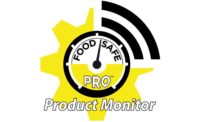So, you’re expanding operations and upgrading equipment. Maybe it’s time for a new packaging machine, or maybe a new grinder, splitting saw, etc.
With an estimated nine to 15 percent of foodborne illnesses occurring because of food eaten at home, it is important to identify risky food handling practices of consumers. Reports indicate foodborne disease outbreaks are often caused by cross-contamination from raw meat products, bare-hand contact with food and poorly cleaned equipment and utensils. Investigations of foodborne illnesses are retrospective and most of the research on consumer food handling practices is based on self-reported information. Our study used video recording, in tandem with microbiological testing, to get a bird’s-eye view of how food is really prepared in the kitchen.
This study was designed to examine the effectiveness of consumer food safety training using the USDA Food Safe Families materials. Consumers with young children were recruited to attend sessions about either nutrition for young children or food safety (either using traditional educational materials or viewing the Ad Council food safety messages). Individuals participating in the nutrition training session served as the control group and individuals participating in food safety training were in the two treatment groups. From these individuals, 123 were recruited to test kid-friendly recipes. They were asked to prepare either a meatball recipe using raw ground beef or a baked chicken strip recipe using raw chicken, including preparation of a ready-to-eat (RTE) fruit salad, in a representative home kitchen.
Participants were video recorded completing the food preparation so food-handling practices could be scored. Because cross-contamination has been identified as a leading source of foodborne illness, the raw meat was inoculated with a non-pathogenic tracer organism (Lactobacillus casei) to enable tracking of cross-contamination on various kitchen surfaces and into final RTE salads.
What did we learn? Bottom line: Consumers do a lot of cross-contaminating regardless of food safety messages provided. Nearly 90 percent of the RTE fruit salads were contaminated with the tracer organism, and 24 percent of them were highly contaminated. We found that several environmental surfaces became contaminated during meal preparation (sink, refrigerator, oven and trash drawer handles; salt shaker; dish cloth; hand towel; and two countertop surfaces), with hand towels harboring the highest contamination levels followed by the dishcloth.
Why does cross-contamination occur? When we examined food-handling behaviors from the videos of the cooking sessions, we found that handwashing practices were a problem. Handwashing was not always done when it was supposed to be done and the proper handwashing techniques often were not used. Table 1 summarizes the frequency and adequacy of handwashing. The highest number of participants who washed their hands adequately did so prior to meal preparation, but that included only about half of the total participants. The highest number of participants who attempted to wash their hands did so after handling either raw meat or raw eggs, but the percentage that used soap and water for 20 seconds was small. Thus, individuals who did not wash their hands well transferred the tracer organism to the fruit salad, hand towels and other contaminated surfaces.
There were other behaviors observed in the videos that likely contribute to cross-contamination. In all treatment groups, the majority did not disinfect countertops after handling raw meat. Participants tended to use a common towel for drying hands and for drying utensils and equipment. Another surprising finding is that some participants used disposable paper towels more than once to wipe hands and/or kitchen surfaces. The good news was that very few participants used the same utensils for raw and cooked meat or raw meat and RTE salad preparation. Thus, it appears that food safety educators have done a good job getting the message out about not using the same cutting boards or plates for raw and cooked food, but we have not done a good job of letting consumers know about other ways that they can contaminate food in the kitchen.
Were there concerns identified other than cross-contamination? Yes, another area of concern for the meat and poultry industry is that consumers do not use a thermometer to ensure that a food is fully cooked. In this study, the final cooking temperature was on the recipe as a cue to take temperatures, and digital thermometers were placed conspicuously in the kitchen. Ninety of the 123 participants took temperatures, but 26 of the 90 did it incorrectly. When asked in a post-cooking questionnaire if they had a food thermometer at home, 71 percent said yes. Participants reported they were more likely to take the temperature of a steak than a hamburger, indicating that they do not understand the relative risk with different products. Color was used as an indicator of doneness by 42 percent of participants. About 75 percent knew the proper cooking temperature for chicken, 63 percent knew the proper cooking temperature for ground beef, and less than half knew the proper temperature for reheating leftovers.
What is the impact of this study for meat and poultry processing companies? This study substantiates that consumers make frequent mistakes when cooking raw meat and poultry that can have an impact on the overall safety of the meals they prepare. Knowing that these consumer mistakes are going to be made, processors need to be diligent in their food safety programs to minimize pathogen carriage by raw products. Further, food processors, regulators and educators must continue their efforts to understand and utilize food safety messaging approaches that effectively lead to good food safety behaviors by food preparers.




Report Abusive Comment